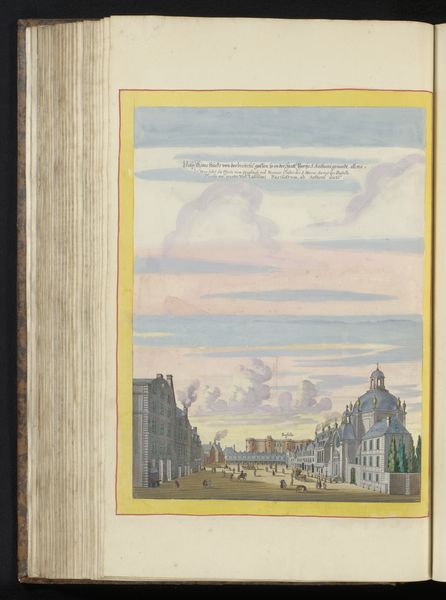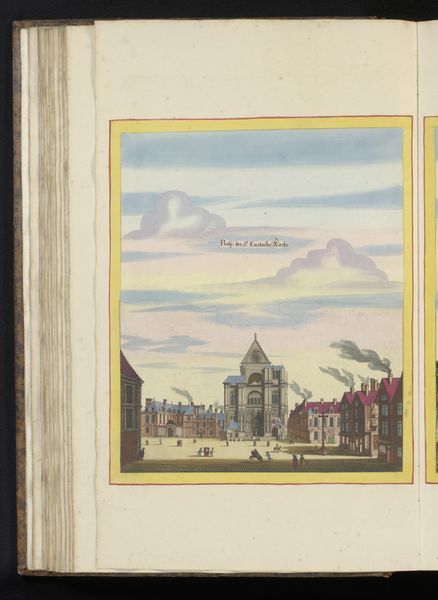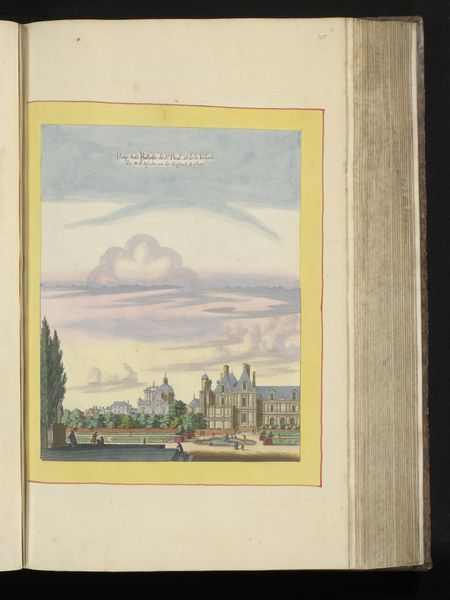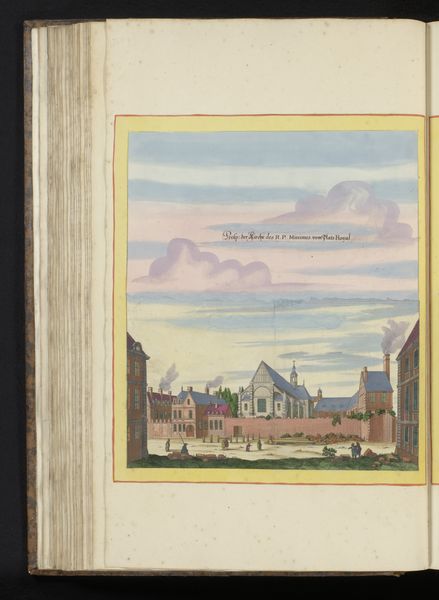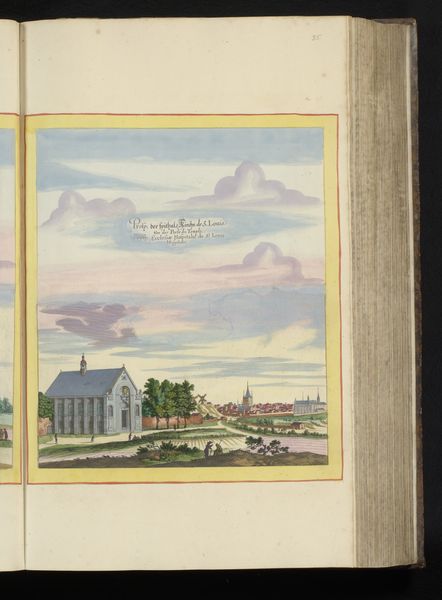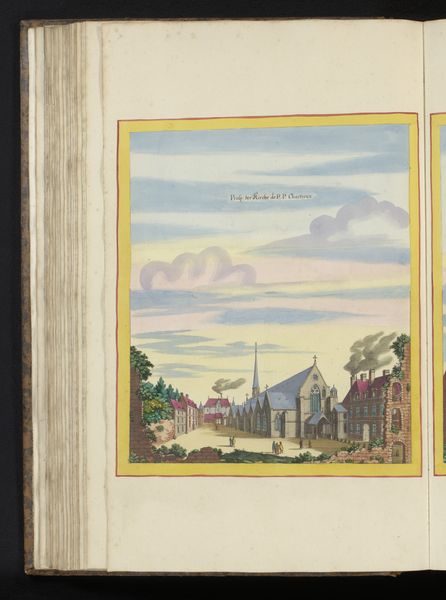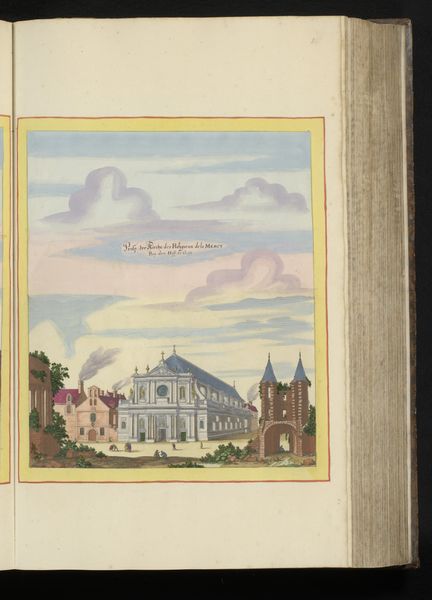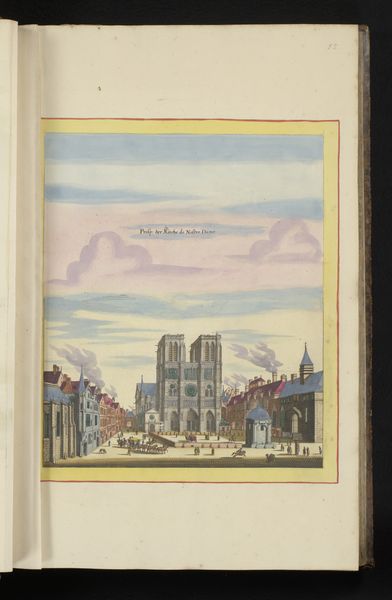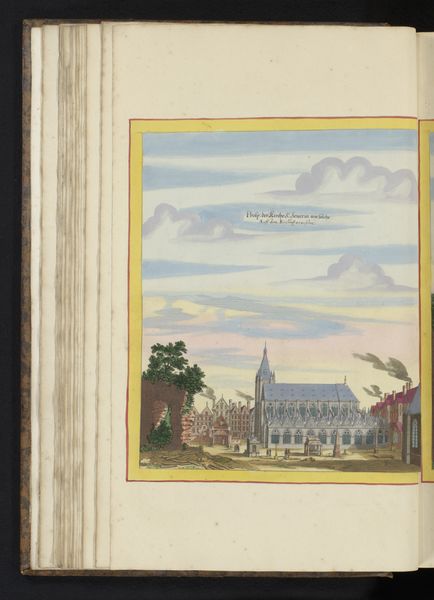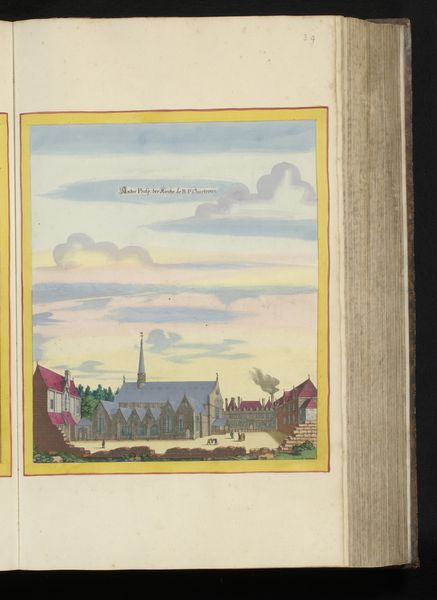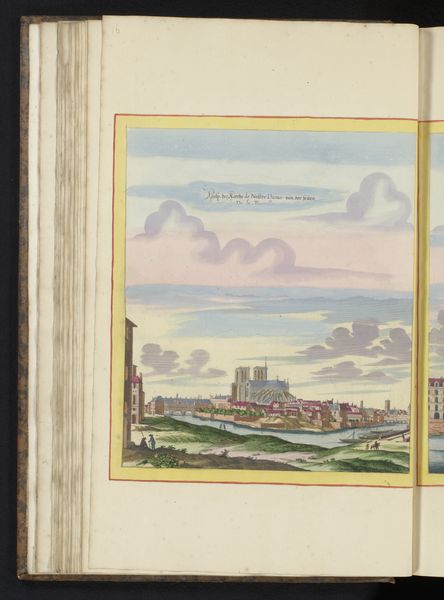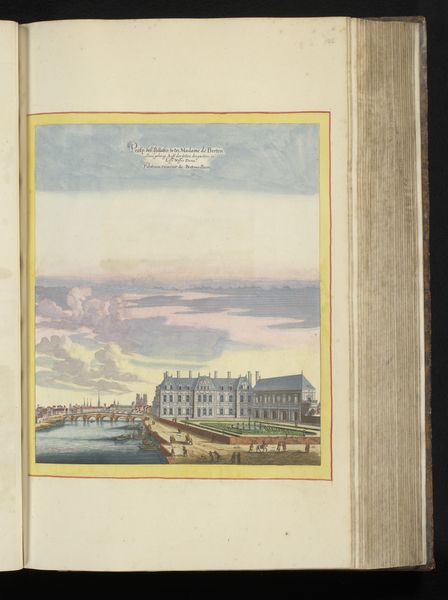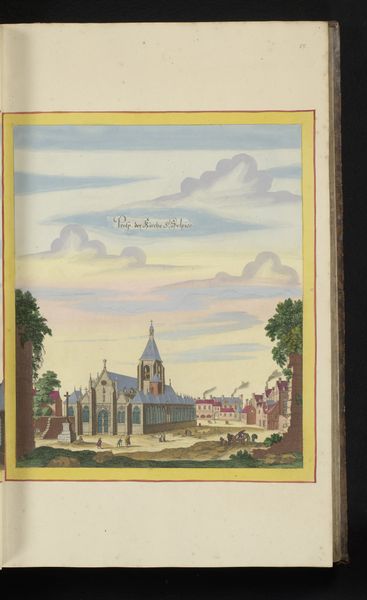
drawing, print, etching, paper, engraving
#
drawing
#
baroque
# print
#
etching
#
paper
#
cityscape
#
engraving
Dimensions: height 334 mm, width 281 mm, height 534 mm, width 330 mm
Copyright: Rijks Museum: Open Domain
Curator: Here we have an etching, engraving and print of "Gezicht op de Sorbonne universiteit van Parijs" ("View of the Sorbonne University of Paris") created around 1655 by Matthäus Merian the Younger. Editor: My first impression is of a very serene space. The light palette and careful detailing give it an almost dreamlike quality, despite being a very architectural subject. It projects a sense of order and established power. Curator: The Sorbonne, of course, held immense significance then as a center of not just religious but also political thought. Its influence shaped discourse across Europe and in French colonies for centuries. We should look closer at its entanglement with gender dynamics, which actively barred women from holding positions of intellectual authority during this time. Editor: It's fascinating how the visual elements support this feeling of authority. The dome of the chapel really dominates the skyline, acting as a focal point. There's almost a halo effect created by the soft clouds surrounding it, subtly implying divine endorsement. But tell me, what can this depiction tell us about life in 17th century Paris? Curator: The artwork shows the social landscape of that era. Notice who has access to this grand space: primarily men of status. We need to address how these spaces reinforced the exclusion of marginalized groups—workers, women, and those of different ethnicities—from academic spheres. How their identities intersected with social power dynamics needs consideration here. Editor: The artist used symbols to telegraph these messages to their intended audience, even without conscious intention. The smoke from the chimneys seems almost deliberately placed, acting like little flags above the secular buildings, suggesting the everyday realities that support institutions like the Sorbonne, almost like background noise. Curator: Right. Analyzing the cityscape in terms of societal infrastructure unveils hidden social power structures from that time. Through our analysis, the past reveals how institutional biases impact today's structures, thus we keep past mistakes from dictating present attitudes. Editor: Understanding symbols, combined with recognizing socio-historical contexts, creates an opportunity for discourse regarding continuity. Both points of view are invaluable in the study of art. Curator: Agreed.
Comments
No comments
Be the first to comment and join the conversation on the ultimate creative platform.
